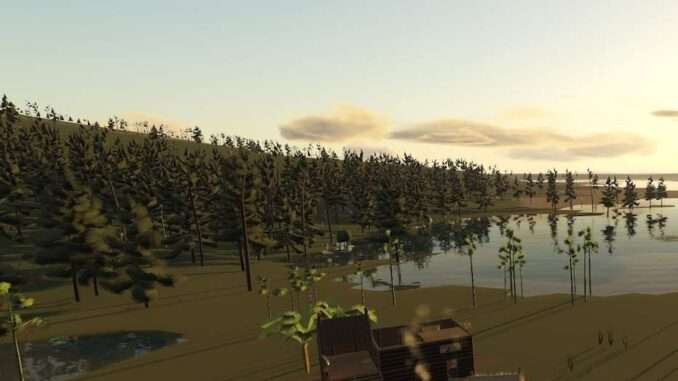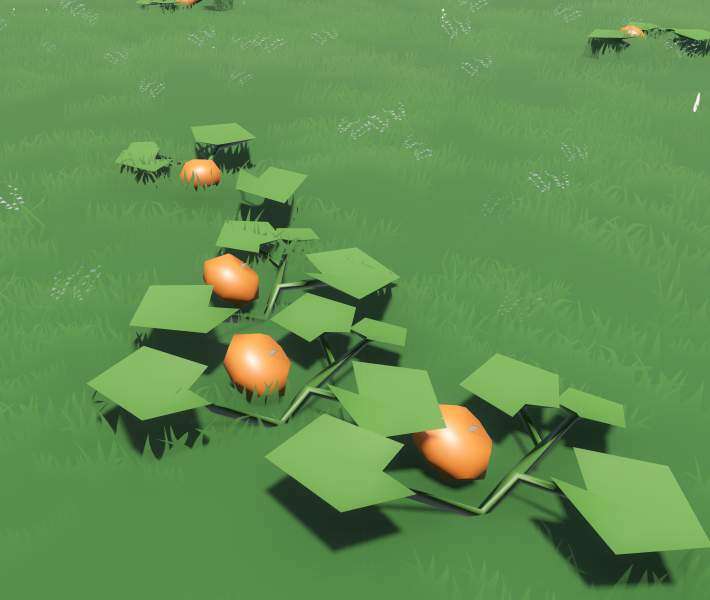
Guide to Animals and Flora
Animals
Animals spawn in the map, and have their own behaviours. They can be hunted for the resources they provide, primarily food and utilities such as woolskins.
Alpaca

The Alpaca is a herbivorous animal found all across the world. In the game’s later stages, they may be hunted and butchered for Alpaca Meat and Alpaca woolskins.
Research and Utility
Alpacas can be researched to unlock the “Spear Hunting” skill.
Spawning Behavior
Alpacas spawn periodically in ‘migrating groups’.
Mammoth

A Mammoth is a large herbivorous animal found all across the world. In the game’s later stages, they may be hunted and harvested for Mammoth Meat and Mammoth woolskins, a fairly decent food source. Mammoths are exceedingly dangerous because if a Sapien gets too close, it will be attacked and most likely killed.
Research and Utility
Mammoths can be researched to unlock the “Spear Hunting” skill.
Spawning Behavior
Mammoths spawn in groups, which migrate from one end of the map to the other. Occasionally, this can be a little annoying as they must be given a wide berth to avoid casualties.
Chicken

The Chicken is an herbivorous animal found all across the world. In the game’s later stages, they may be hunted and butchered for Chicken Meat.
Research and Utility
Chickens can be researched to unlock the “Basic Hunting” skill.
Spawning Behavior
Chickens spawn periodically in ‘migrating groups’.
Flora
Flora, the plants and crops that can be grown, appear naturally around the world and can be collected. Most can be planted by the player too.
Dirt
Soil has 4 qualities: rich, normal, poor and very poor. Clay and all kinds of sand have very poor quality. Rich and poor soil double and half the growth and replenishment speed of flora planted on it respectively.
Crafting
These plants are used primarily for crafting objects or structures. Takes 3 days to reach maturity from planting or harvesting.
Hay
Hay can be used to craft several buildable objects. It is gathered by clearing soil. 2 pieces of wet hay are produced from soil, while 4 pieces are produced by clearing soil covered in snow. The soil will regrow the hay. Wet hay dries to become dry hay.
Flax
Flax is used to produce flax twine, which is used to produce tools. It can be found more commonly near sources of water such as rivers or oceans. Harvesting flax produces wet flax and seeds, of which the latter can be replanted. Wet flax dries to become dry flax.
Sunflower
Harvesting Sunflowers produces seeds.
Crops
Crops are plants that can be found from procedural generation, and harvested and grown by the player for food. Takes 3 days to reach maturity from planting or harvesting.
Wheat

Wheat can be used to make bread via a series of crafting techniques. One wheat is produced per harvest, and a new wheat seedling replaces the harvested wheat plant.
Pumpkins

Pumpkins can spawn in large batches or in small groups. They can be cooked to be used for food or used to make Balafons.
Beetroots
Beetroots can spawn in large batches or in small groups. They can be cooked to be used for food.
Bushes
Bushes are a naturally generated regenerating source of berries. Berries can be eaten or planted to produce new bushes. Each bush produces 6 berries per harvest. Both kinds of bush yield one birch branch when uprooted.
Raspberry Bushes
Produce raspberries.
Gooseberry Bushes
Produce gooseberries.
Trees
Trees are a regenerating source of food and branches. All trees can be harvested for branches and seeds/fruit, which replenishes after a time. Trees can also be chopped down using an axe tool and the tree chopping technology to produce logs. Each fruit and seed requires a separate storage area, but branches from any kind of tree can be stored together.
| Branch | Log | Seed/Fruit | |
| Birch | 2 | 0 | 0 |
| Willow | 6 | 3 | 4 |
| Aspen | 6 | 3 | 4 |
| Pine | 2-4 | 2-6 | 4 |
| Big Pine | 10 | 20 | 4 |
| Bamboo | 4 | 0 | 4 |
| Coconut | 0 | 4 | 6 |
| Apple | 2 | 2 | 6 |
| Orange | 2 | 2 | 10 |
| Peach | 2 | 2 | 7 |
| Banana | 0 | 0 | 6 |
Fruitless Trees
These trees produce branches and seeds. Seeds will rot after a time based on its environmental conditions.
Birch Trees
Birch trees can come in 4 regular variants.
Willow Trees
Willow trees can come in 2 regular variants.
Pine Trees
Pine trees can come in 4 regular variants with 1 large variant. They are commonly found in the tropics. Different pine tree variants yield different numbers of branches (2-4) and logs (2-6). The large variant produces 10 branches and 20 logs, and produces a different seed. The big pine cone variant has a fuel effectiveness of 6.
Aspen Trees
Aspen trees can come in 3 regular variants with 1 large variant.
Bamboo
Bamboo can come in 2 regular variants. Bamboo grow abundantly in warm climates. Does not produce logs.
Fruitful Trees
These trees produce branches and fruit. Fruit will rot after a time based on its environmental conditions.
Apple Trees
Produce apples and apple branches.
Banana Trees
Produce bananas, but does not produce logs or branches.
Coconut Trees
Produces coconuts, but does not produce branches (Coconuts food preparation requirements?; more information required).
Orange Trees
Produces orange and orange tree branches.
Peach Trees
Produces peaches and peach tree branches.





Be the first to comment